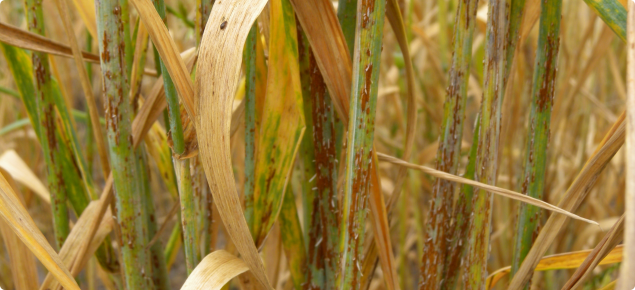Introduction
In Western Australia, stem rust typically causes losses of 10–50% in wheat, but this can increase to up to 90% when it occurs in early spring and is not controlled. Stem rust attacks wheat and triticale but barley can also be an important host during summer months. Stem rust produces large, reddish-brown oval to elongated spore masses on both sides of the leaf, on leaf sheaths, stems and outsides of heads. The pustules have tattered edges. The symptoms of stem rust and how the disease develops are discussed in detail on the Diagnosing stem rust of wheat MyCrop page.
Stem rust requires living plants on which to grow and reproduce. To infect crops during the season it must survive summer by infecting volunteer cereals or grass hosts, known as the ‘green bridge’.
Other rusts that infect wheat in WA are stripe rust and leaf rust but these do not occur on stems. More information on these can be found at Managing stripe rust and leaf rust in wheat in Western Australia.


